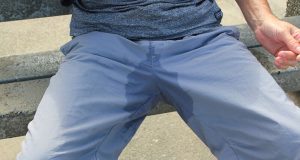By Dr. Virginia Nsitem
PRIDE Pain Specialist
Do your knees buckle? Do your knees crack and pop when you go up and down stairs? Do you have difficulty sitting down for long periods of time because of knee pain? This article discusses the common causes of knee pain.
Knee joint
The knee joint connects the thigh bone (femur) with the shin bone (tibia). The knee cap (patella) sits on top of the knee joint and prevents the muscles from rubbing against the bones.
There are ligaments around the knee joint that work to provide stability, and there are tendons that connect muscles to the bones of the knee and also provide stability. The cartilage of the knee covers the ends of the bones and helps them glide smoothly during movement.
There are also shock absorbers in the knee joint (meniscus) that help balance the stress in the joint. The two main muscles that attach to the knee are the quadriceps (front thigh muscles) that bend the knee, and the hamstrings (back thigh muscles) that straighten the knee.
Causes of knee pain
Knee pain can be caused by damage to any of the structures of the knee. Some of the common causes of knee pain include:
Osteoarthritis (degenerative wear and tear on the knee, with pain, stiffness, and “cracking noises” of the joint).
Ligament injuries (Ligament tears, usually sport injuries, that cause the knee to lock, buckle, or give way).
Trauma (fractures, tears, or contusions from accidents, falls, or sports, causing sharp pain).
Tendonitis (repetitive injuries causing inflammation, pain with jumping, pain with sitting for long periods of time, and limited movement).
Bursitis (inflammation of the protective sacks around the knee, causing swelling, pressure, and pain sometimes with bending and kneeling).
What treatments are helpful?
The first step to addressing the knee pain is getting a proper diagnosis. It is important to see your chiropractor or physician for a full evaluation. You may be referred for follow-up tests such as an x-ray or ultrasound. If the damage is severe, a referral to an orthopaedic specialist may be recommended.
For common injuries such as ligament sprains, muscle strains, arthritis, bursitis, and tendonitis, your therapy program may include laser therapy and ice for pain relief and healing, chiropractic techniques to promote proper movement of the knee joint, massage therapy, and a specific stretching and exercise program.
You may also be educated on ways to modify your activity to prevent a recurrence of the pain.
Dr. Virginia Nsitem is a chiropractor specializing in laser therapy for muscle, joint, and nerve injuries, and is a Fellow of the Royal College of Chiropractic Sports Sciences in Canada. She may be reached at (905) 275-4993, or by email at totalhealth@bellnet.ca.
 Pride News Canada's Leader In African Canadian & Caribbean News, Views & Lifestyle
Pride News Canada's Leader In African Canadian & Caribbean News, Views & Lifestyle





